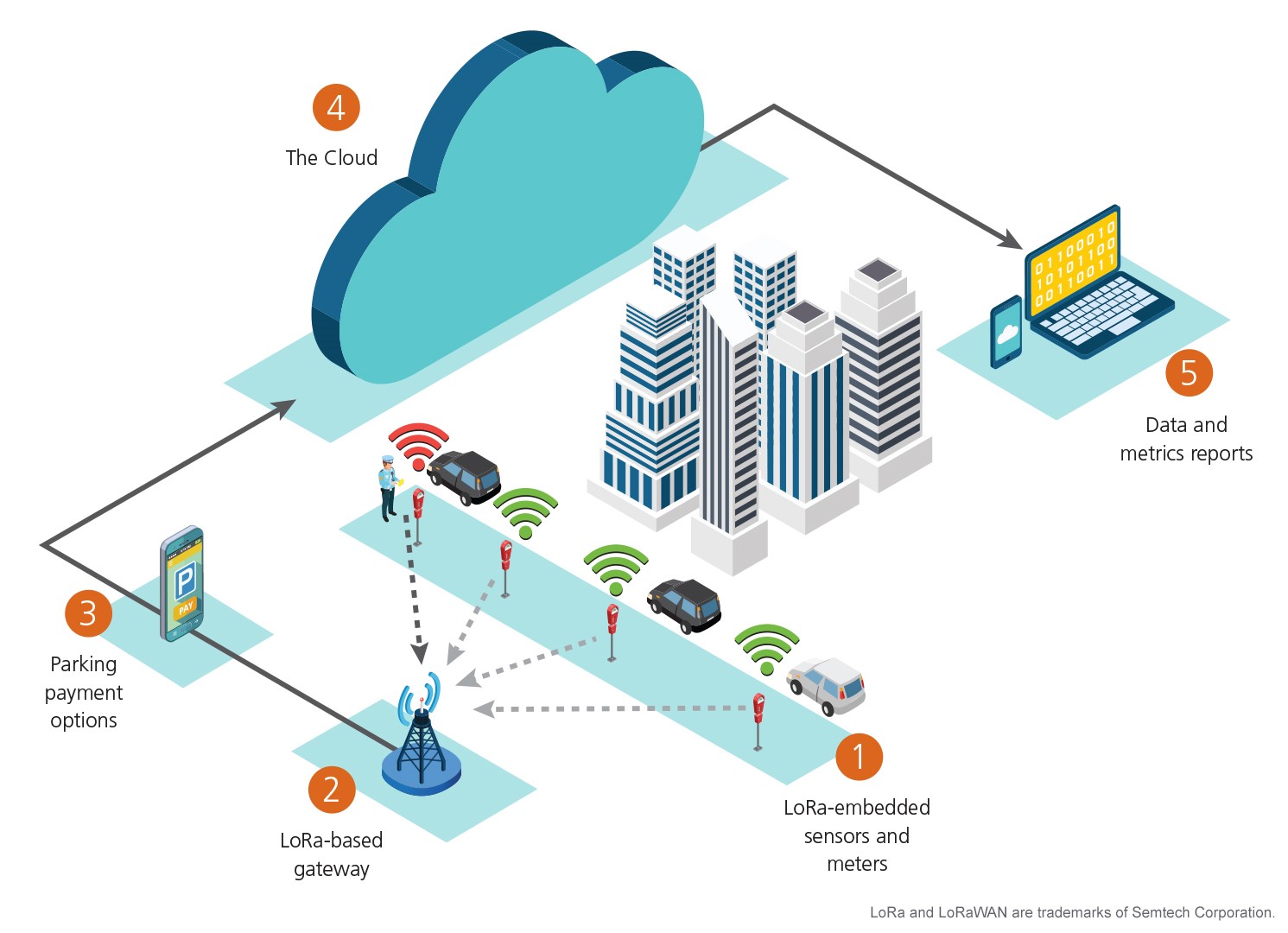BY VIVEK MOHAN
Semtech Corporation
www.semtech.com
When a radical technology enters the market, designers look at how it can transform the world. For LoRa devices and wireless radio frequency technology (LoRa Technology), this has meant that its long range and low power consumption can significantly simplify network design by enabling greater reach with less infrastructure and cost.
The advantages offered by the technology’s wireless communication are significant compared to alternative options. Its robust penetration reaches up to 2 miles in dense urban areas and offers an outdoor line of sight (LOS) up to 30 miles in remote rural landscapes. Operating on an open standard, LoRa can be used with LoRaWAN, IEEE 802.15.4g, and WMBus protocols and provides footprint-compatible ICs to support global coverage.
LoRaWAN-based sensors and gateways (base stations) typically cost less than competing low-power wide-area network (LPWAN) technologies for a number of reasons. First, there are no wireless spectrum license fees because they operate in the unlicensed spectrum. Cellular-based technologies operate in licensed spectrum and incur intellectual property (IP) royalties due to 3GPP heritage.

In a LoRaWAN-based application, low operating cost is supported by battery-operated sensors, which can run up to 20 years. It also eliminates the sensor power-source wiring used in GSM, LTE, or Wi-Fi networks. With a receiver current at 4.5 mA, the latest Semtech SX126x family provides a 50% reduction compared to the previous generation and a high-power option of +22 dBm. This extends battery life of LoRa-based sensors by up to 30%, which reduces the frequency of battery replacement dramatically. In addition, the standards-based Firmware Updates Over The Air (FUOTA) feature allows devices to be maintained over their lifetime.
The long range and energy efficiency of LoRa have enabled designers to eliminate the need for repeaters. This has reduced infrastructure cost and provided enhanced capacity with the scalability to support tens of thousands of nodes per gateway, with each gateway transmitting the data securely to a cloud-based or corporate-based server for analytics, allowing end users to make decisions based on hard real-time metrics rather than guesswork.
These performance characteristics have allowed LoRa to emerge as the go-to solution for networks demanding easy installation, low cost, and robust, secure communication in harsh environments. Existing applications include the installation of wireless sensors in parking meters, toll booths, and traffic signals. The remote monitoring provided by the LoRaWAN-based network helps the city reduce emissions and manage the flow of traffic to reduce congestion. GPS-free geolocation also allows low-cost sensors to securely track people, pets, and major assets.

Compatibility with products from leading silicon manufacturers is complemented by a range of Semtech LoRa-based devices, which are optimized to support various applications for wireless networking. For high reliability in low-data-rate and low-power communication, sub-GHz radio transceivers provide flexible support for LoRaWAN as well as for legacy G/FSK modulation. A simple command-based interface and continuous frequency coverage from 150 MHz to 960 MHz enables these transceivers to be used in all major sub-GHZ ISM bands worldwide.
The scope for implementing LoRa ranges from using the technology in small, private, home-based networks to public networks with a national or international reach. The high-link budget offers a 30-dB improvement over FSK to reject co-channel interference and delivers power consumption seven times lower to minimize operational cost. This makes LoRa a viable option for increasing efficiency across a very wide range of sectors and applications.
Applications that can benefit from the differentiated advantages of LoRa cover high-capacity wireless monitoring and control of IoT and M2M networks, as well as security and intruder systems, fire detection, access control, and real-time monitoring and management of air quality. LoRa technology has also helped to evolve high-security remote keyless entry (RKE) and active RFID systems as well as deliver green solutions for homes and company buildings. Support from the non-profit LoRa Alliance, with over 500 companies as members, has given designers the confidence to base even the most challenging design ideas on this new technology.
LoRaWAN has been deployed by over 100 public operators in over 60 counties today, and the technology is enabling products that are smarter, cleaner, and more effective for managing resources. For end users, LoRa delivers hard, real-time metrics that can be used to shape greater operational advantages. For designers, the decision to use simple, long-range, and low-power LoRa is driven by the ambition to create systems that are innovative and strongly efficient.
Advertisement
Learn more about Semtech





